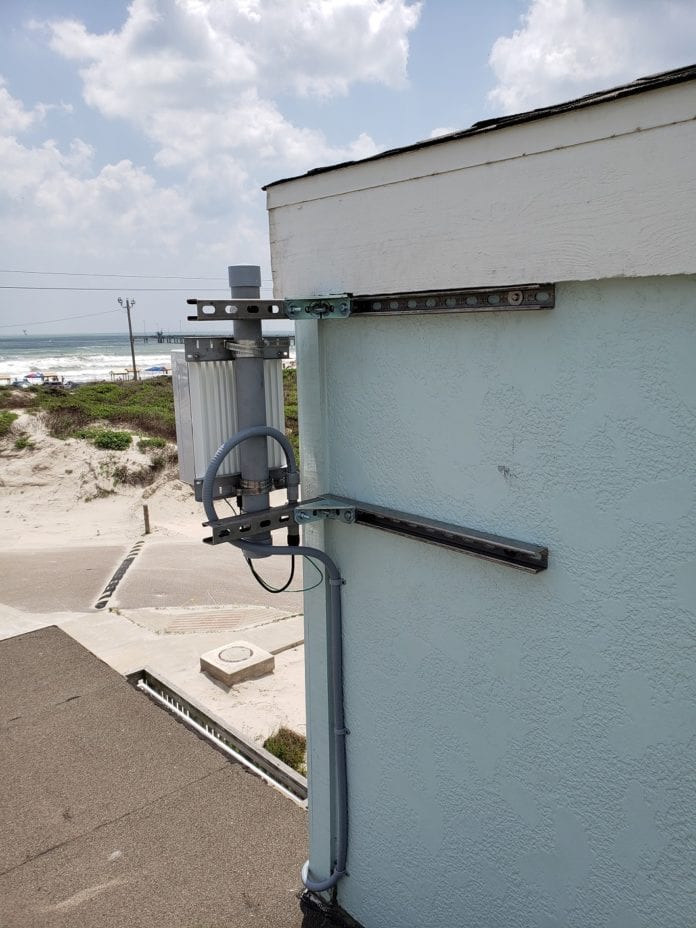The bureaucratic wheels continue to turn in the process to get initial commercial deployments of the Citizens Broadband Radio Service underway. It’s … so … close.
On Friday, a blog post confirmed that the final test reports for the first wave of Spectrum Access System administrators — which include Federated Wireless, CommScope subsidiary Comsearch and Google — were officially completed and submitted to the commercial participants on Thursday. By Friday afternoon, Federated Wireless had already submitted its final SAS test results to the Federal Communications Commission for review, and the CBRS Alliance put out a statement saying that it expects all of the SAS administrators who have received results to submit those reports to the FCC within days — which will complete all of the related industry work necessary for initial commercial deployments (ICD) to begin.
The only hurdles left to clear before initial commercial deployment (ICD) can start, are the review of those SAS test results by the FCC, the National Telecommunications and Information Administration and the Department of Defense, and — assuming that the results are acceptable — the official authorization of the SAS administrators, based on those results.
Federated had previously submitted the draft results of its testing in an effort to get the review process jump-started and said that its SAS passed all of the more than 1,000 tests conducted by Institute for Telecommunications Sciences, which is part of NTIA (the draft and official results submitted to the FCC are redacted, citing competitive concerns).
The SASes, which enable the proper sharing and protection of users in the three-tiered CBRS framework, went through testing with ITS that was completed in April. Draft results were made available to the SAS administrators last month, and the CBRS ecosystem has been anxiously awaiting ITS’ submission of the official results reports on which authorization of the SAS will be based.
CBRS will launch initially with two of the three tiers of sharing enabled: incumbents and General Authorized Access. The Priority Access tier will be licensed, but that auction is not expected to happen until 2020. The coastal Environmental Sensing Capabilities (ESC), which protect incumbents including naval radar systems on ships, were previously tested by ITS and have already received authorization. Federated Wireless’ network is already operational.
ICD is essentially formal field testing, although the networks will be considered commercial at that point. The WInnForum describes ICD as being used to prove the ability of Spectrum Access Systems and CBRS devices to perform properly in the field. It is a minimum period of 30 days, at which point a report on the results of ICD has to be submitted to the FCC for review. Once the ICD data has been reviewed, the SAS operators can receive final certification and approval to operate for five years. That is the point at which CBRS will be well and truly open for large-scale business.
“The completed tests will drive progress toward initial commercial deployments in the band, prized for its excellent mix of capacity and coverage capabilities,” Keith Gremban, director of ITS, wrote in the blog post on the official completion of the test result reports. He went on to note that while LTE technology is available for the band now, “industry has already begun to develop specifications to support 5G deployments.”
A number of companies have recently indicated plans for large-scale tests of CBRS, including Walt Disney resorts and cable company Charter Communications.
Dave Wright, president of the CBRS Alliance and director of regulatory affairs and network standards for CommScope (which now owns Ruckus Wireless) said at the recent Dynamic Spectrum Alliance global summit that a CBRS Alliance event earlier this year featured demonstrations of 31 CBRS devices that are either already certified for operation, or soon will be, ranging from flagship smartphones to customer premise equipment to IoT modules and gateways.
On Friday, Wright released a statement saying that the CBRS Alliance had been alerted by its SAS administrator members late Thursday that they had received their official result reports from ITS, and that it expects all of them to submit those reports to the FCC within the next few days.
“Our leadership met recently with the FCC, NTIA, and DoD, and we have no doubt that our federal partners are as eager as the Alliance’s members for the launch of commercial service,” Wright added.

